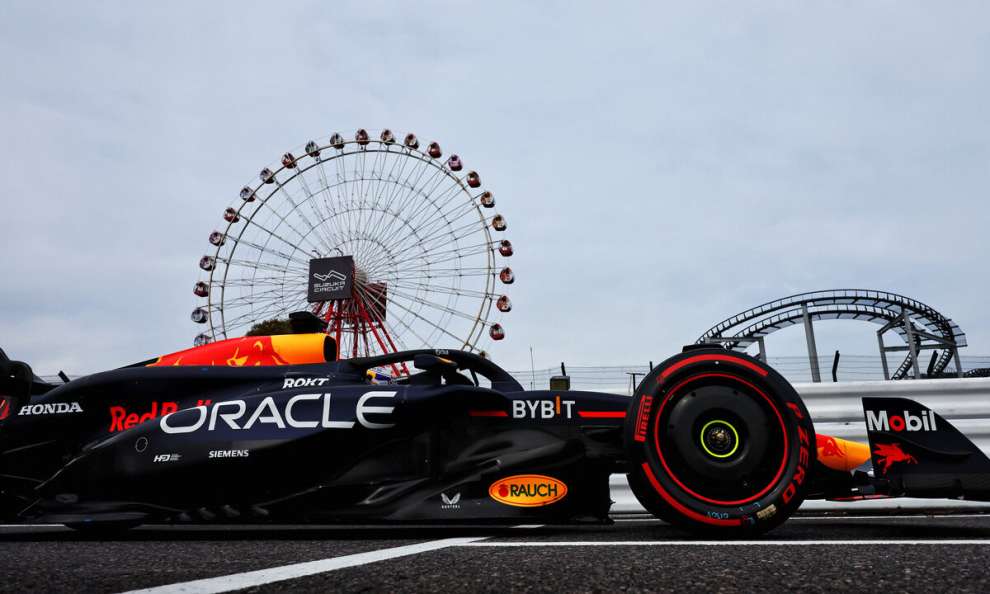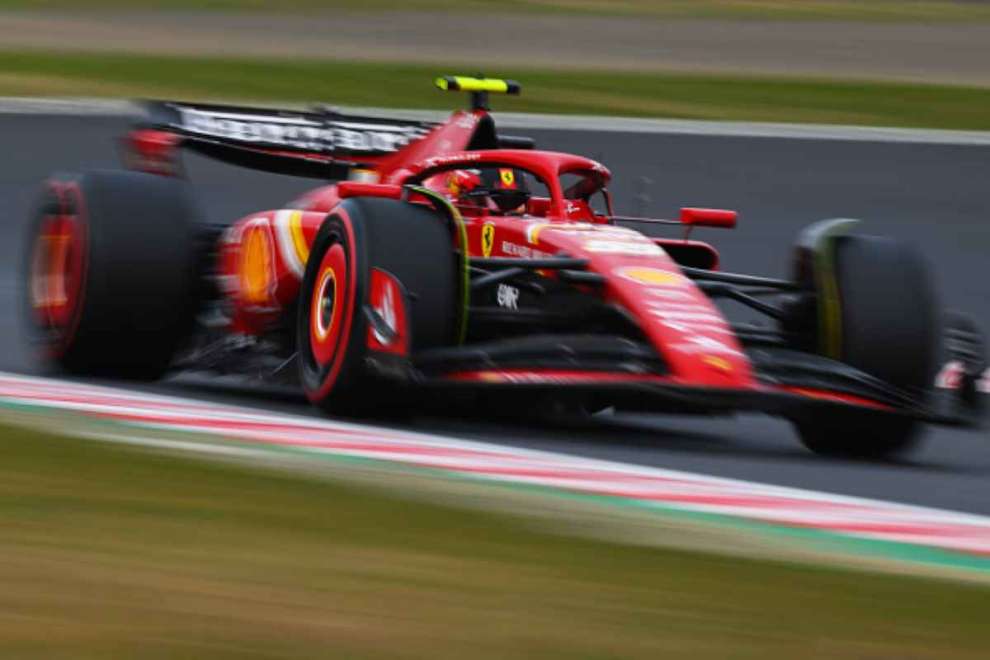By Carlo Platella
Tire degradation returns to the forefront at Suzuka, after the low-wear race in Jeddah and the dominant graining in Melbourne. Red Bull will have the advantage of being able to control the race from the front row, but the world champions showed an unconvincing race pace in practice. In Milton Keynes, they also have to deal with one less set of hard tyres, after the one used on Friday also due to the more optimistic forecasts on tire degradation. The point at FormulaPassion.it of Simone Berrachief engineer of Pirelli.
Temperatures drop, degradation does not
“Initially we expected that the lower temperatures of these days, around 10-15°C less than last year, could influence the level of tire degradation,” explains Berra. “Despite this however, degradation remained high, especially with the soft and medium, in line with last year. Probably the characteristics of the circuit, both in terms of lateral energy and the roughness of the asphalt, which we know is particularly aggressive, are decisive in providing a certain level of thermal degradation in all conditions”.
This reduces the chances of attending a race with a single stop: “Before the weekend we expected the double and single stop strategies to be very close in terms of race time. Looking at the FP3 data however, we expect it to be a two-stop race a little for everyone. Most teams held two sets of hard, except Ferrari, Red Bull, Aston Martin and a Haas. We believe that the single stop is slower, as it was last year, when Mercedes alone tried it with Russell, without gaining any positions.”
Overtaking at Suzuka is certainly not easy, one characteristic will push you to fit the softer compound to gain positions at the start: “The soft tire tends to degrade a lot, but guarantees a lot more grip at the start. We have seen that it guarantees 1 second less on the flying lap performance. We expect that many may decide to start with the soft ones Therefore. On paper, the fastest strategy involves starting on the soft tyres, stopping on the 8th-15th lap to switch to the hard ones and then fitting another set of hard ones between the 30-35th lap, for those who have them”.
The disadvantage of Ferrari and Red Bull
The Milton Keynes and Maranello teams will not be able to follow the strategy indicated as the fastest by Pirelli. In fact, both teams used one of the two sets of hard tires for the race pace simulations on Friday morning, depriving themselves of the possibility of using it in the race. “I think they expected less degradation with the lower temperatures, which would have caused the hard tire to struggle more in the race”comments Berra. “A colder Sunday was initially forecast with a high risk of rain, which has now dropped to 40%. For this reason they must have thought that the hard one was less usable and that on the contrary the soft one was more usable”.
A small disadvantage therefore for Ferrari and Red Bull, but there is no shortage of alternatives: “The last stage can be run on medium tires with less fuel load, extending the second stint up to the 32nd-37th lap. […] Last year the middle schools performed well. Ferrari, for example, had done two stints on medium and one on hard. Therefore they will probably remain on the same strategy, starting from what they did last year”.

In fact, Pirelli hints at a further possibility: “Some teams might opt to start with the mediums, which guarantees more consistency over the long distance. In that case we would switch to hard between the 12th and 18th laps, and then return to medium between the 32nd and 37th laps. The single stop, on the other hand, is 5 seconds slower and would only be possible by alternating medium and hard.” What is certain is that the strategists will have their work cut out for them, also considering the possibility of gaining positions with the early stop: “Given such high degradation, the undercut will be powerful. The disadvantage, however, is having to manage one tire for longer.”
A more human Red Bull
Above all, the Maranello team showed off in the race pace simulations: “Ferrari is doing a lot of work on tire management in the race, where they have improved a lot since last year. On the other hand, they are less fast in qualifying, which is a bit like a short deck issue. By trying to be more docile and less aggressive on the tyres, you risk not having the peak performance on a single lap.”
“With the park closed, having a tire immediately ready risks straining it immediately and after two or three laps you end up beyond the usage window,” continues Berra. “A more docile suspension on the tire, on the other hand, doesn't give you the same pure performance and generates less temperature in the tire, but it keeps the front in the correct window for more laps. It's a question of concept.” A dynamic that would also explain Red Bull's excellent performance in qualifying, but less incisive in the simulations with a full fuel load.

“In Saturday morning's race simulations, Red Bull was less alien than usual, with a level of degradation in line with the other teams”, confirms the Pirelli engineer. “The fuel loads obviously could have been different. In any case I expect a fast Red Bull, but with a degradation that will also be important for them. I think the situation will be different from last year.”
#Japanese #watch #degradation #race #Pirelli